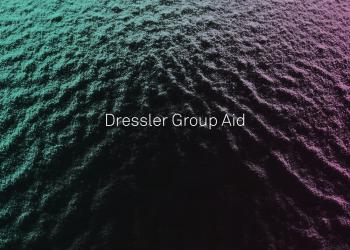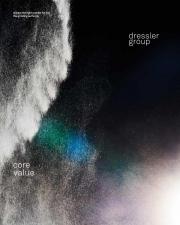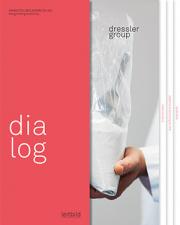Trade fair review
Dressler Group at formnext 2017

There are companies. Then there are companies whose opinions are listened to. Feedback from the many visitors at its trade fair stand demonstrated that Dressler Group belongs to the latter group. This is in no small part due to the announcement by HP Inc. (formerly Hewlett Packard) shortly before the start of the trade fair that it has chosen Dressler Group as a Preferred Partner for developing and manufacturing powder for 3D printing.
Dressler Group (DG) impressed with its expertise in plastic grinding and optimisation at the very well attended formnext 2017. For almost four decades, it has been researching and developing, largely planning and building its systems itself, to precisely design customer raw materials for ever more challenging applications. It has recently also won over HP Inc. with this approach: from now on, Dressler Group will take on the development and manufacture of plastic powder for HP Multi Jet Fusion 3D printers as a Preferred Partner of HP. DG will also ensure, on behalf of HP, that the suppliers of raw materials deliver the required specifications.
DG as an opinion leader
“One of the many trade fair highlights for us was the fact that we were visited by many raw material and 3D printing machine manufacturers, producers, university representatives and students, in addition to existing and prospective customers,” says Jan Dressler, CEO and Managing Partner of Dressler Group. “This shows that not only our actual services are in demand, but also our all-round expertise and opinions.”
What makes DG special for trade fair visitors and customers
Topics with which the Dressler Group was particularly able to impress trade fair visitors included the performance of its various processes, the characteristics of the powders (including filled powders) with regard to their flow properties and flame protection, flexibility, delivery reliability and customer-specific packaging.
Seamless documentation ensures that exactly the same specification can be identified and accessed in the desired quantity, even years later. In principle, anything is possible, from test grinding of a few grams up to large quantities of several hundred tonnes. DG has also earned itself a reputation for not only gaining the best from the raw material in terms of quality, but also the most in terms of quantity. A high material yield also saves resources and protects the environment while ensuring maximum cost-effectiveness for high-value raw materials.
Outlook
The question of future trends is staple content of a trade fair. For example, where DG sees the best potential for material quality and powder optimisation – and, above all, what it is working on. "For us, it is not necessarily the case that fine must always be made even finer," says Jan Dressler. "After all, fineness is not an end in itself, but must have a specific benefit. For instance, depending on the application, grain sizes of around 125 µ are well suited to 3D printing." In contrast, he considers grain shape to be much more important: "We see many advantages for powder shapes that are as round as possible. This improves flow properties, print quality and the reliability of machines."
DG is therefore currently working on machinery that optimises the grain shape. And that's not all: "Besides 3D printing, medical technology is an important industry for us," says Axel Dressler, also Managing Partner at Dressler Group. "In the future, we want to be able to manufacture under GMP conditions in virtually all plants. Our extensive experience with cleanroom manufacturing and our approval from the Food and Drug Aministration in the US helps us in this respect."




